Misdiagnosis: Tendinitis
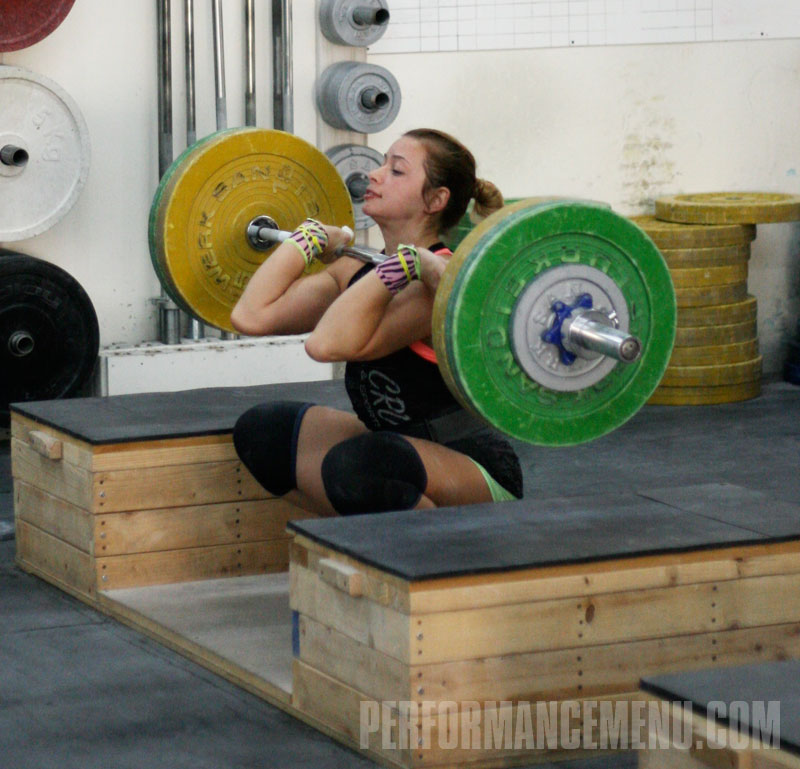
Though I’d felt a small flutter for at least a month, I felt a twinge of real pain in my left knee during an indoor practice at a small, local college in Bethlehem, Pa., in 2003. The U.S. women’s national 7s team had gathered together from across the country for a week of practice before our annual excursion to the Hong Kong 7s, our third international tournament that year. It was still only March, however, and the weather outside wasn’t cooperating, which is how we found ourselves practicing our plays on the sticky rubber flooring of a gymnasium. As we worked on our change of direction and running lines, that twinge quickly escalated to a full-blown “Holy hell, is someone stabbing my knee with an ice pick??!” I clearly recall staring down at my kneecap, thinking something must surely be sticking out of it.
And that’s the way it went, for months and months afterward. Upon arriving home post-tournament, I was diagnosed with tendinitis, so I diligently attended physical therapy appointments, where my doc administered ultrasound treatments. I iced my knee with an array of bagged frozen vegetables multiple times a day, I started popping prescription anti-inflammatories, and I rested. Nothing helped.
Wanna know why? I didn’t really have tendinitis.
“Underdiagnosis of tendinosis is a trend,” says Gregory Kowal, PT, DPT, CSCS, a physical therapist currently practicing in Philadelphia, Pa. What’s more, many cases universally assumed to be tendinITIS are, in fact, tendinOSIS injuries instead.
Tendinitis and tendinosis are separate but possibly related diagnoses of joint pain, and while there is some overlap in treatments, there are also significant differences that make an accurate diagnosis extremely valuable, explains Jonathan Fass, PT, DPT, CSCS, ART, private physical therapist and sports manager to Prince Alwaleed bin Talal of Saudi Arabia and cofounder of The Strength of Evidence podcast. The difference is that tendinitis is an acute condition occurring from sudden trauma to a tendon (say, lifting a weight that’s too heavy for your connective tissues to handle), while tendinosis occurs when there is repeated loading (even if it’s within the abilities of your connective tissues to handle the movement) without sufficient rest and recovery between bouts.
Inflammation is present in –itis, which is a short-term condition lasting several weeks at most, whereas -osis involves tissue degeneration and can go on and on, until you’re able to stimulate collagen regeneration in the injured area. This difference means that the ice, rest and anti-inflammatories often used to combat tendinitis are powerless in the face of tendinosis — or worse. “Anti-inflammatory medications that could help a case of tendinitis have been found to speed tendon damage and even weaken the tissue in tendinosis, where there is no inflammation present,” says Fass. “That’s why it’s very important to consult a medical professional for a proper diagnosis and treatment strategy. Doing the wrong thing might actually make you worse.”
So who’s got what? “You would expect that a deconditioned individual — someone who may not be physically active or is unprepared for new activity — to suffer a tendinitis injury. These are the weekend warriors who play pickup basketball but are otherwise sedentary during the week, or the recreational jogger who decides on a whim to enter a 10K,” says Fass. “Clinically, we would look for a specific event that is above or beyond ‘regular’ activities, indicating that the pain or dysfunction that a patient is experiencing came on suddenly and rapidly. In the case of tendinosis, we expect the opposite: individuals that are regularly participating in sports or exercise but who may not be either resting, eating or sleeping well. This is the weightlifter who begins to develop a nagging pain in their back every time he deadlifts, or the runner who begins to feel pain in the knees 30 minutes into his run.”
It’s not always exactly that neat and tidy, though. “There is some evidence to suggest that tendinosis can lead to a weakened tendon if not addressed immediately, thereby increasing your risk of acute micro-tears and injury to that area,” adds Fass. In other words, if you don’t treat your -osis, it may eventually result in -itis, too.
Prevention is the Best Cure
Your best bet is avoiding either condition altogether.
Preventing tendinitis can be as simple as strengthening your body through exercises that are specific to the task or functions you expect it to handle. “Apply sound resistance-training principles, using progressive overload where increases in weight are systematic and appropriate to your abilities,” says Fass. “Too much too soon can lead to injury.”
The other -itis prevention strategy is making sure you move with sound mechanics. “People who get tendinitis tend to have a movement dysfunction and therefore ‘misuse’ their joints. For example, patellar tendinitis [of the knee] is the result of core, hip, or glute weakness, leading to faulty mechanics in the pelvifemoral region and thus putting strain on the knee downstream,” says Erika Mundinger, PT, DPT, physical therapist at Tria Orthopaedic Center in Bloomington, Minn., and trainer at The Movement Minneapolis. “A person with a slouched, forward shoulder posture will be prone to rotator cuff tendonitis if they do a lot of overhead lifting. Elbow tendinitis is the result of weakness at the shoulder or faulty mechanics at the wrist.”
Prevention of tendinosis, on the other hand, has to do with heeding your body’s need for rest and regeneration. Deep sleep, solid nutrition and smart programming are clutch.
Treatment Options: -Itis Vs. -Osis
If your prevention strategies didn’t do the trick, make sure to employ a smart treatment strategy.
If you are faced with a legitimate tendinitis diagnosis, often times ice, rest, anti-inflammatories (Zyflamend and Wobenzym are herbal options) and a rejiggering of your movement mechanics will be enough to resolve the condition quickly.
When it comes to tendinosis, on the other hand, those won’t resolve the issue. “Soft tissue work directly to the affected area is important,” says Kowal. “At this point, the tendon and surrounding area is more or less scar tissue. Soft tissue work such as ART or Graston can help reduce this scarring and restructure the tendon. This happens by actually restarting the inflammation response, so the body can go through its healing process.”
In addition, the name of the game here is eccentric exercise, or the slow lowering of a weight, says Fass. Studies show that eccentric training performed twice a day can lead to significant improvements in tendinosis conditions due to increased collagen production (the stuff that makes up our tendons), and in improved collagen alignment. (We want our collagen fibers to be aligned in order to transmit the forces evenly, but in injury formation collagen can be formed erratically and poorly aligned, like a scar.) In addition, eccentric training ultimately makes the tendon thicker and stronger in order to resist future injury.
Even so, you don’t just want to load yourself up and go to town. Instead, use a graded program. “You want to induce a certain level of strain to stimulate the tissues and have them adapt to that stress,” says Kowal. “When I'm prescribing the load, I want my patient to report a mild reproduction of their symptoms: mild. Once we have the load, we'll go for volume. In one set I'll have the patient repeat the motion until pain goes from a mild to moderate increase. I'll limit the first few sessions to sets of 10 because I want people to get three sets. Once we have load and initial volume we'll increase volume to three sets of 15 reps each, and then increase load again.” Kowal uses this progression until his patient is able to perform all other activity without pain. He notes a maintenance program may then be performed for up to a year afterward.
This is all with the goal of building new tendon tissue — no fast and easy task. “When a tendon is damaged, the body rebuilds the damaged Type 1 collagen through a process that begins with its precursor form, procollagen. Although there is some discrepancy to absolute timelines of healing, the most commonly reported numbers tend to be about 100 days to make new collagen,” says Fass. “Getting adequate sleep, reducing behaviors that might contribute to injury, nourishing yourself properly — research suggests that vitamin C, for instance, may significantly contribute to the generation of new collagen — and following an eccentric strengthening program to ensure that remodeled tissue is functional and effectively distributed can all help ensure your recovery will be as fast and effective as possible.”
Recovery Time: What to Expect
Recovery times can vary, of course, but if your joint pain is tendinitis, you can expect to be back in action somewhere in the neighborhood of two to 10 weeks. When it comes to tendinosis, it may take three to six months, or even longer. “The longer you’ve had the problem, the longer it takes to heal,” Mundinger notes.
The key is to not only address the immediate symptoms at the particular area of pain, such as the elbow or knee, but to address any behaviors or identifiable issues that could have led to this in the first place, says Fass. “By addressing whatever ergonomic, mobility or strength deficits that might also be present, we can spread the forces throughout the limb instead of focusing it at a particular muscle or joint, which will hopefully lead to more efficient and less damaging forces in future activity.”
After a few months spinning my wheels, I switched physical therapists and received a more accurate diagnosis of tendinosis. With a whole lot of slow lowering, I eventually got back up to speed. If the “tendinitis” you’re suffering from has been lingering for a while, and ice and anti-inflammatories aren’t doing the trick, consider seeking a different diagnosis. Those with suspiciously long-lasting cases might be better served with a more eccentric exercise program.
Eccentric Treatment Options for Tendinosis
Below are some eccentric exercise recommendations from Erika Mundinger, PT, DPT, physical therapist at Tria Orthopaedic Center in Bloomington, Minn., and trainer at The Movement Minneapolis. Do three sets of the exercise that strengthens the appropriate joint twice a day, performing reps until pain increases from mild to moderate level during the set. Move quickly through the concentric portion of the lift, helping yourself into position with your free hand or arm, and count to four during the eccentric portion of the lift.
Knee: Perform single-leg squats or step-downs. Focus on alignment of hip, knee and ankle to avoid valgus (inward collapse) of the knee, and sit back with weight in the heel to avoid the knee translating past the toe.
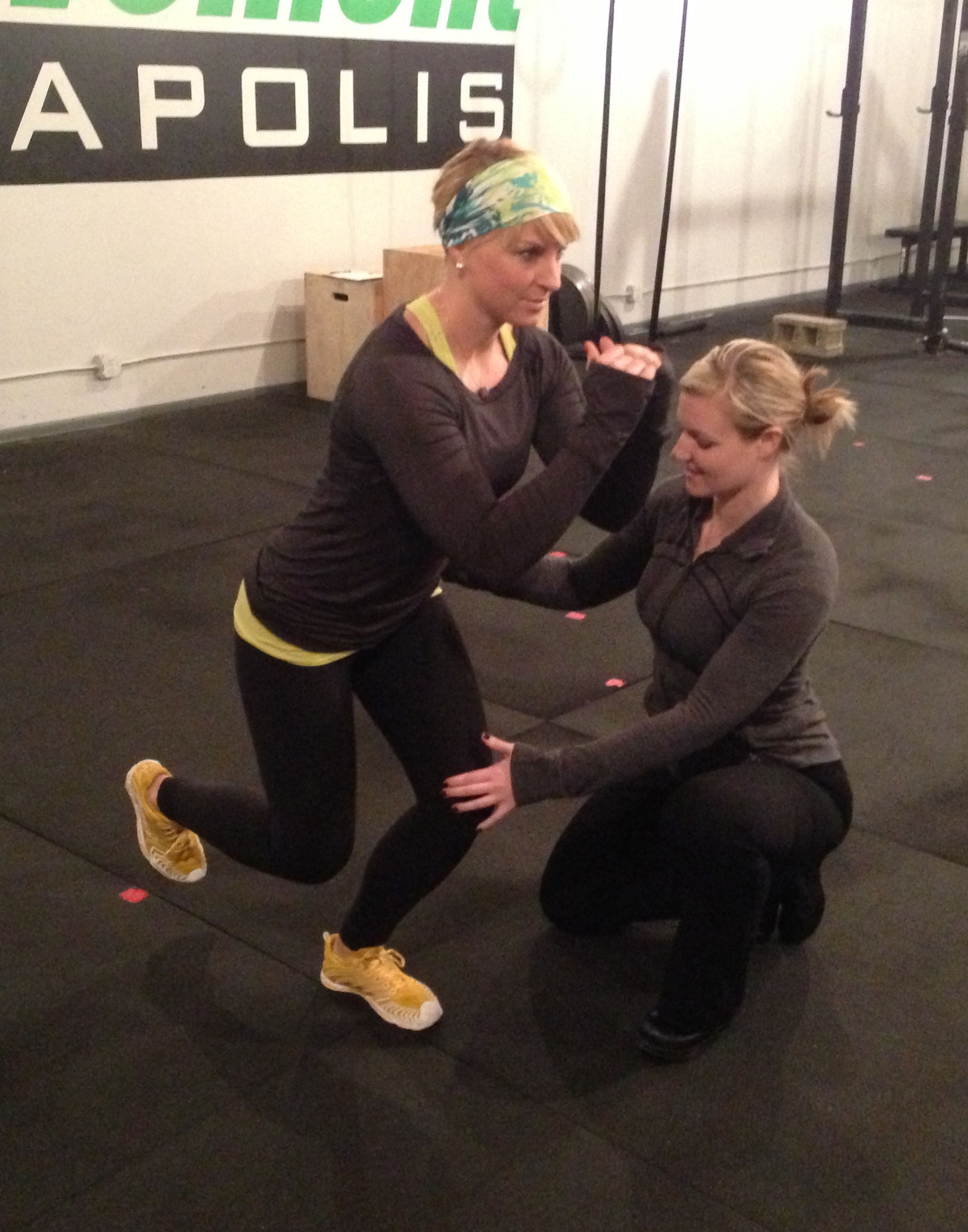
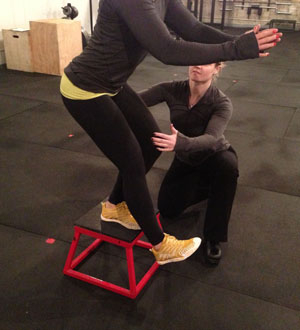
Elbow: Perform eccentric wrist extension and flexion with a dumbbell. Assist wrist into extension with opposite hand, and then slowly lower the weight all the way through flexion. Do the same with pronation, assisting the wrist all the way to supination, then slowly lowering to pronation.
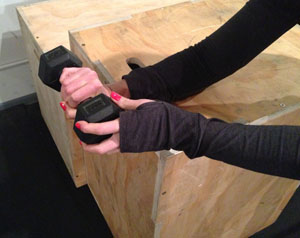
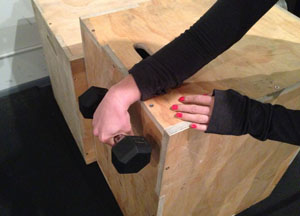
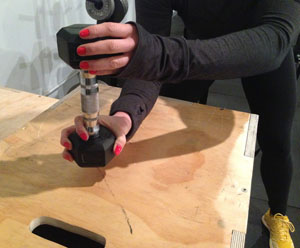
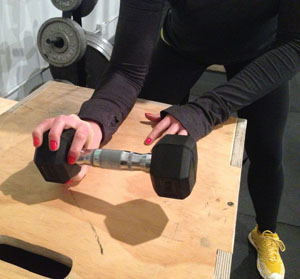
Achilles Tendon: Perform eccentric calf raises on the edge of step. Standing with the balls of the feet on the edge of a step, raise up onto the tip-toes. Then lift your uninjured foot, bearing all of your weight in your injured foot, and slowly lower your heel down until it is below the edge of the step.
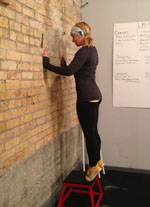
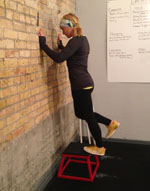
Shoulder: Perform eccentric external rotation both with the elbow at your side and with your arm flexed at 90 degrees, elbow parallel to your shoulder. These are great with a cable machine, but can be done with a band, as well. Externally rotate your arm quickly out, helping with your other hand, and then slowly resist, moving back into internal rotation.
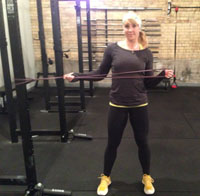
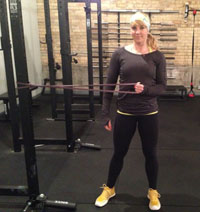
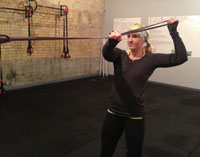
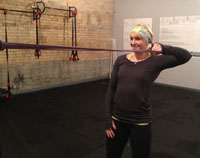
And that’s the way it went, for months and months afterward. Upon arriving home post-tournament, I was diagnosed with tendinitis, so I diligently attended physical therapy appointments, where my doc administered ultrasound treatments. I iced my knee with an array of bagged frozen vegetables multiple times a day, I started popping prescription anti-inflammatories, and I rested. Nothing helped.
Wanna know why? I didn’t really have tendinitis.
“Underdiagnosis of tendinosis is a trend,” says Gregory Kowal, PT, DPT, CSCS, a physical therapist currently practicing in Philadelphia, Pa. What’s more, many cases universally assumed to be tendinITIS are, in fact, tendinOSIS injuries instead.
Tendinitis and tendinosis are separate but possibly related diagnoses of joint pain, and while there is some overlap in treatments, there are also significant differences that make an accurate diagnosis extremely valuable, explains Jonathan Fass, PT, DPT, CSCS, ART, private physical therapist and sports manager to Prince Alwaleed bin Talal of Saudi Arabia and cofounder of The Strength of Evidence podcast. The difference is that tendinitis is an acute condition occurring from sudden trauma to a tendon (say, lifting a weight that’s too heavy for your connective tissues to handle), while tendinosis occurs when there is repeated loading (even if it’s within the abilities of your connective tissues to handle the movement) without sufficient rest and recovery between bouts.
Inflammation is present in –itis, which is a short-term condition lasting several weeks at most, whereas -osis involves tissue degeneration and can go on and on, until you’re able to stimulate collagen regeneration in the injured area. This difference means that the ice, rest and anti-inflammatories often used to combat tendinitis are powerless in the face of tendinosis — or worse. “Anti-inflammatory medications that could help a case of tendinitis have been found to speed tendon damage and even weaken the tissue in tendinosis, where there is no inflammation present,” says Fass. “That’s why it’s very important to consult a medical professional for a proper diagnosis and treatment strategy. Doing the wrong thing might actually make you worse.”
So who’s got what? “You would expect that a deconditioned individual — someone who may not be physically active or is unprepared for new activity — to suffer a tendinitis injury. These are the weekend warriors who play pickup basketball but are otherwise sedentary during the week, or the recreational jogger who decides on a whim to enter a 10K,” says Fass. “Clinically, we would look for a specific event that is above or beyond ‘regular’ activities, indicating that the pain or dysfunction that a patient is experiencing came on suddenly and rapidly. In the case of tendinosis, we expect the opposite: individuals that are regularly participating in sports or exercise but who may not be either resting, eating or sleeping well. This is the weightlifter who begins to develop a nagging pain in their back every time he deadlifts, or the runner who begins to feel pain in the knees 30 minutes into his run.”
It’s not always exactly that neat and tidy, though. “There is some evidence to suggest that tendinosis can lead to a weakened tendon if not addressed immediately, thereby increasing your risk of acute micro-tears and injury to that area,” adds Fass. In other words, if you don’t treat your -osis, it may eventually result in -itis, too.
Prevention is the Best Cure
Your best bet is avoiding either condition altogether.
Preventing tendinitis can be as simple as strengthening your body through exercises that are specific to the task or functions you expect it to handle. “Apply sound resistance-training principles, using progressive overload where increases in weight are systematic and appropriate to your abilities,” says Fass. “Too much too soon can lead to injury.”
The other -itis prevention strategy is making sure you move with sound mechanics. “People who get tendinitis tend to have a movement dysfunction and therefore ‘misuse’ their joints. For example, patellar tendinitis [of the knee] is the result of core, hip, or glute weakness, leading to faulty mechanics in the pelvifemoral region and thus putting strain on the knee downstream,” says Erika Mundinger, PT, DPT, physical therapist at Tria Orthopaedic Center in Bloomington, Minn., and trainer at The Movement Minneapolis. “A person with a slouched, forward shoulder posture will be prone to rotator cuff tendonitis if they do a lot of overhead lifting. Elbow tendinitis is the result of weakness at the shoulder or faulty mechanics at the wrist.”
Prevention of tendinosis, on the other hand, has to do with heeding your body’s need for rest and regeneration. Deep sleep, solid nutrition and smart programming are clutch.
Treatment Options: -Itis Vs. -Osis
If your prevention strategies didn’t do the trick, make sure to employ a smart treatment strategy.
If you are faced with a legitimate tendinitis diagnosis, often times ice, rest, anti-inflammatories (Zyflamend and Wobenzym are herbal options) and a rejiggering of your movement mechanics will be enough to resolve the condition quickly.
When it comes to tendinosis, on the other hand, those won’t resolve the issue. “Soft tissue work directly to the affected area is important,” says Kowal. “At this point, the tendon and surrounding area is more or less scar tissue. Soft tissue work such as ART or Graston can help reduce this scarring and restructure the tendon. This happens by actually restarting the inflammation response, so the body can go through its healing process.”
In addition, the name of the game here is eccentric exercise, or the slow lowering of a weight, says Fass. Studies show that eccentric training performed twice a day can lead to significant improvements in tendinosis conditions due to increased collagen production (the stuff that makes up our tendons), and in improved collagen alignment. (We want our collagen fibers to be aligned in order to transmit the forces evenly, but in injury formation collagen can be formed erratically and poorly aligned, like a scar.) In addition, eccentric training ultimately makes the tendon thicker and stronger in order to resist future injury.
Even so, you don’t just want to load yourself up and go to town. Instead, use a graded program. “You want to induce a certain level of strain to stimulate the tissues and have them adapt to that stress,” says Kowal. “When I'm prescribing the load, I want my patient to report a mild reproduction of their symptoms: mild. Once we have the load, we'll go for volume. In one set I'll have the patient repeat the motion until pain goes from a mild to moderate increase. I'll limit the first few sessions to sets of 10 because I want people to get three sets. Once we have load and initial volume we'll increase volume to three sets of 15 reps each, and then increase load again.” Kowal uses this progression until his patient is able to perform all other activity without pain. He notes a maintenance program may then be performed for up to a year afterward.
This is all with the goal of building new tendon tissue — no fast and easy task. “When a tendon is damaged, the body rebuilds the damaged Type 1 collagen through a process that begins with its precursor form, procollagen. Although there is some discrepancy to absolute timelines of healing, the most commonly reported numbers tend to be about 100 days to make new collagen,” says Fass. “Getting adequate sleep, reducing behaviors that might contribute to injury, nourishing yourself properly — research suggests that vitamin C, for instance, may significantly contribute to the generation of new collagen — and following an eccentric strengthening program to ensure that remodeled tissue is functional and effectively distributed can all help ensure your recovery will be as fast and effective as possible.”
Recovery Time: What to Expect
Recovery times can vary, of course, but if your joint pain is tendinitis, you can expect to be back in action somewhere in the neighborhood of two to 10 weeks. When it comes to tendinosis, it may take three to six months, or even longer. “The longer you’ve had the problem, the longer it takes to heal,” Mundinger notes.
The key is to not only address the immediate symptoms at the particular area of pain, such as the elbow or knee, but to address any behaviors or identifiable issues that could have led to this in the first place, says Fass. “By addressing whatever ergonomic, mobility or strength deficits that might also be present, we can spread the forces throughout the limb instead of focusing it at a particular muscle or joint, which will hopefully lead to more efficient and less damaging forces in future activity.”
After a few months spinning my wheels, I switched physical therapists and received a more accurate diagnosis of tendinosis. With a whole lot of slow lowering, I eventually got back up to speed. If the “tendinitis” you’re suffering from has been lingering for a while, and ice and anti-inflammatories aren’t doing the trick, consider seeking a different diagnosis. Those with suspiciously long-lasting cases might be better served with a more eccentric exercise program.
Eccentric Treatment Options for Tendinosis
Below are some eccentric exercise recommendations from Erika Mundinger, PT, DPT, physical therapist at Tria Orthopaedic Center in Bloomington, Minn., and trainer at The Movement Minneapolis. Do three sets of the exercise that strengthens the appropriate joint twice a day, performing reps until pain increases from mild to moderate level during the set. Move quickly through the concentric portion of the lift, helping yourself into position with your free hand or arm, and count to four during the eccentric portion of the lift.
Knee: Perform single-leg squats or step-downs. Focus on alignment of hip, knee and ankle to avoid valgus (inward collapse) of the knee, and sit back with weight in the heel to avoid the knee translating past the toe.


Elbow: Perform eccentric wrist extension and flexion with a dumbbell. Assist wrist into extension with opposite hand, and then slowly lower the weight all the way through flexion. Do the same with pronation, assisting the wrist all the way to supination, then slowly lowering to pronation.




Achilles Tendon: Perform eccentric calf raises on the edge of step. Standing with the balls of the feet on the edge of a step, raise up onto the tip-toes. Then lift your uninjured foot, bearing all of your weight in your injured foot, and slowly lower your heel down until it is below the edge of the step.


Shoulder: Perform eccentric external rotation both with the elbow at your side and with your arm flexed at 90 degrees, elbow parallel to your shoulder. These are great with a cable machine, but can be done with a band, as well. Externally rotate your arm quickly out, helping with your other hand, and then slowly resist, moving back into internal rotation.




|
Jen Sinkler is former editorial director of fitness content for Experience Life magazine. She now talks fitness, food and general health topics at Thrive with Jen Sinkler at www.jensinkler.com (sign up for her email newsletter there), and coaches clients at Movement Minneapolis, a facility that uses biofeedback-based training techniques. She is a certified kettlebell instructor through the RKC and KBA, and an Olympic lifting coach through USA Weightlifting. She also holds coaching certifications through TACFIT, CrossFit and L.I.F.T. (Ultimate Sandbag). Jen played rugby for 13 years, many of those on the U.S. national 7s and 15s teams. |
Search Articles
Article Categories
Sort by Author
Sort by Issue & Date
Article Categories
Sort by Author
Sort by Issue & Date

